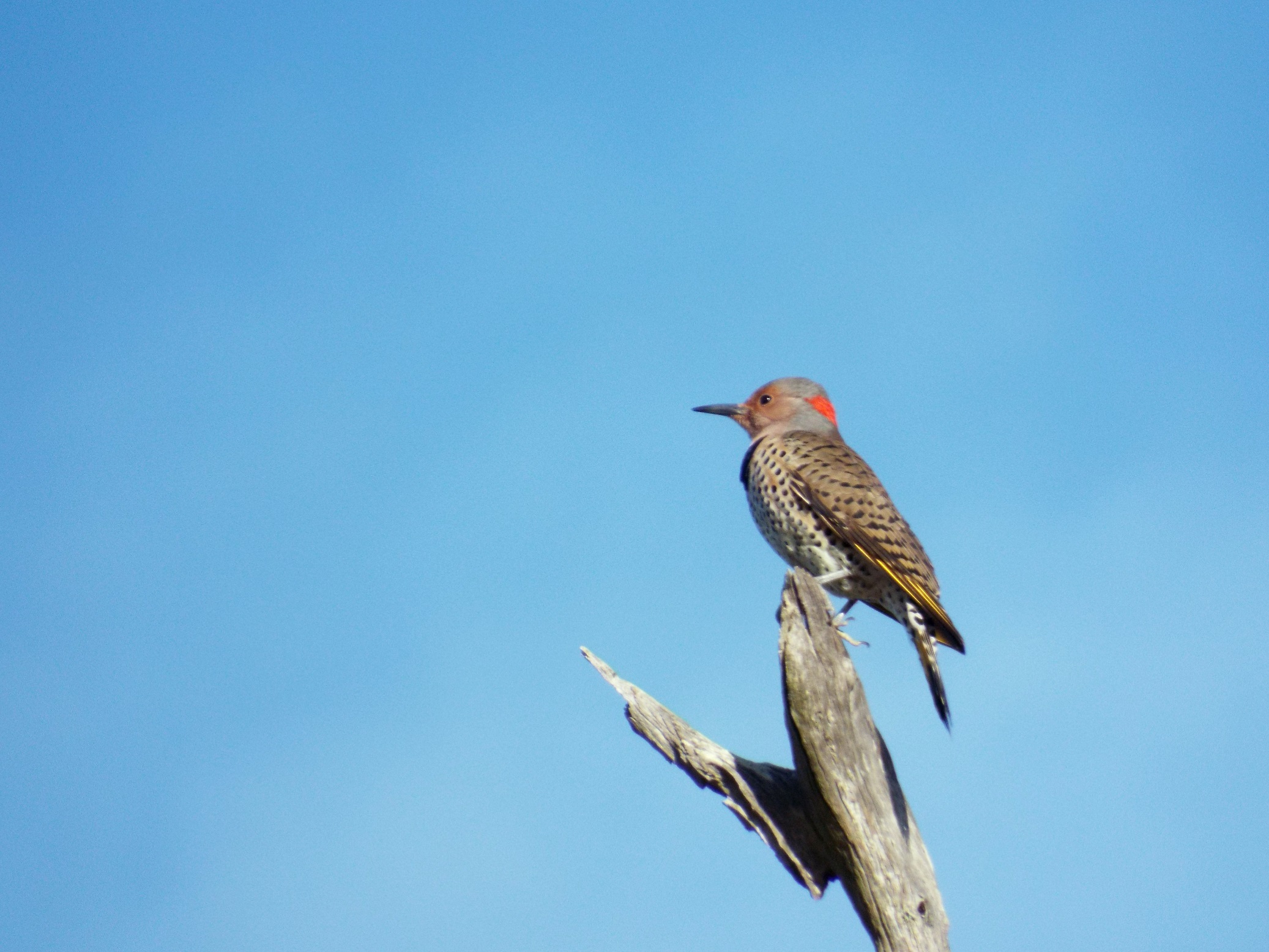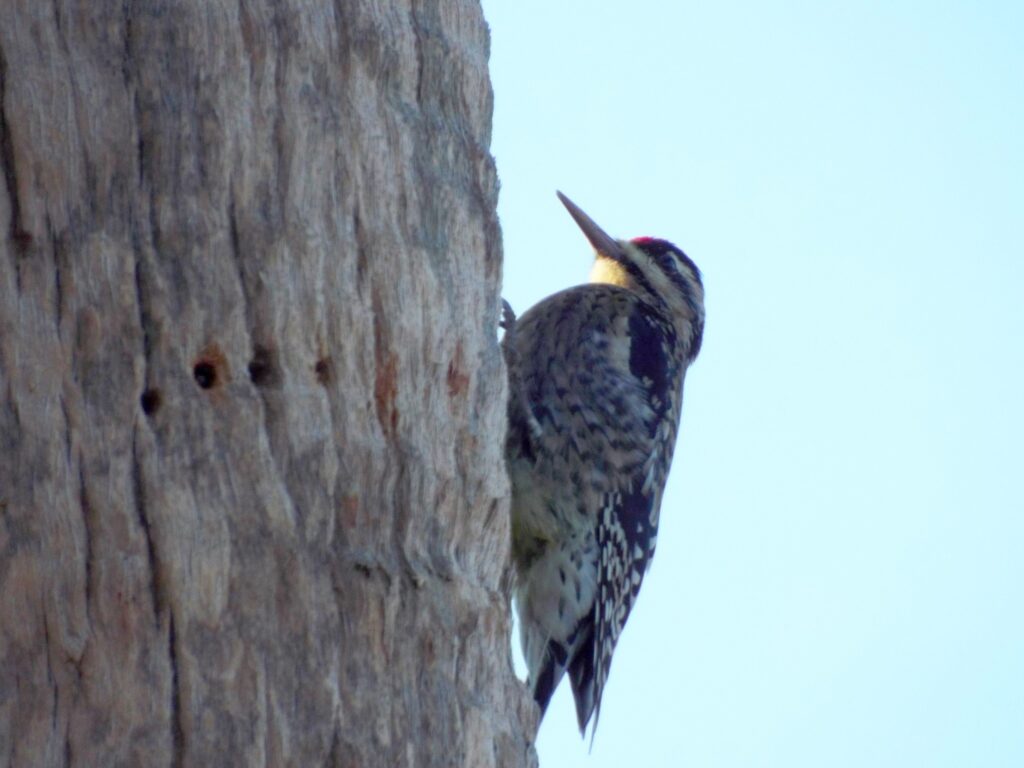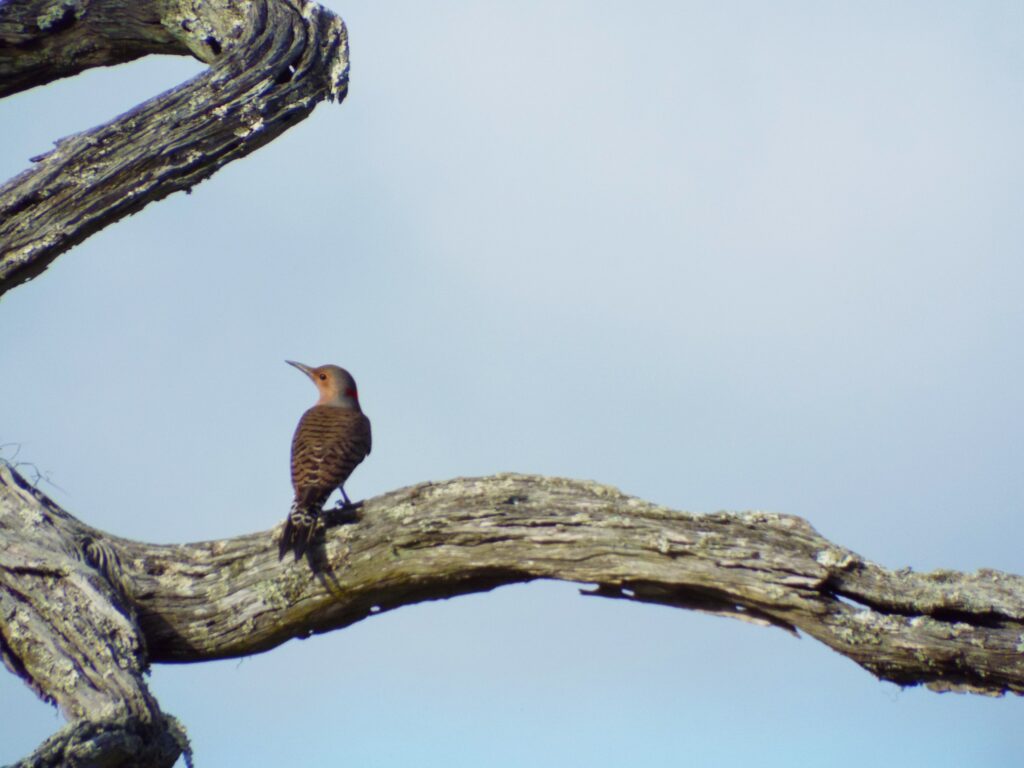



Before they start leaving for the season, this week for Flora and Fauna we’re going to be talking about our two winter Woodpeckers: the Northern Flicker (Colaptes auratus) and the Yellow-bellied Sapsucker (Sphyrapicus varius). Both of our winter Woodpeckers are unique compared to our other 6 non-migratory Woodpecker, in both their appearance, behavior, and diet.
The Northern Flicker is our second largest Woodpecker in SC, at about 12 inches tall. In the Eastern US we have the Yellow-shafted subspecies (C. a. auratus). Like most of our Woodpeckers, males and females are very similarly plumaged but differ in facial markings. Males have a black patch at the base of their bill and females do not (both of my photos below are females). The Yellow-shafted Flicker is a gorgeous bird. Instead of being monochrome with red accents, like the rest of our Woodpeckers, Flickers are an alloy of bronze, copper, steel, and gold with ashen whites, blackened coals, and a lone crimson ember. Look for the golden wings and tail feathers, speckled belly, black crescent on the chest, and red crescent on the back of the head.
Flickers are also unique in the way they feed. They primarily feed on the ground and not in trees. They hunt for insects in field, yards, and forest edges but also eat plenty of berries and other fruits in the winter. They are one of the few species that will eat the invasive Red Imported Fire Ant. They will attack ant mounts. Using their pointed bill to jab into the soil beside a mound before sticking out their long sticky tongue out to snatch ants, eggs, and larvae from their underground tunnels. They’re also one of the bird species I’ve seen eating the wax coated seeds of the invasive Chinese Tallow Tree.
The Yellow-bellied Sapsucker is an average sized sapsucker, at about 8 inches tall. They’re a more typically colored woodpecker, being mainly black and white with a touch of red on the head. Their plumage has a grungy, somewhat dirty quality to it compared to the rest of the Woodpeckers. They also have an amber wash to their belly, hence the first half of their common name. Both males and females have a red crown but males also have a red beard (my first photo is a male and the second a female).
Sapsuckers feed even more uniquely than the Flicker. They still stick to the treetops but instead of hunting for insects within the branches of trees, they peck rings of shallow holes around the trunks of trees called sap wells. They only peck down to the tree’s vascular tissue beneath the bark. They primarily target the phloem but will drill into the xylem on deciduous trees in the winter. The phloem is the area of the tree that carries the sugar rich sap generated in the leaves down to the roots. The xylem is the area of the tree that carries water and nutrients from the roots to the leaves but is often enriched with sugars in the winter as a natural antifreeze. Once exposed to the air and devoid of their protective bark, the phloem leaks this calorie rich sap into the sap well. The Yellow-bellied Sapsucker will regularly return to these holes to lap up this sugary syrup, hence the second half of its common name. They also won’t shy away from an easy meal of insects or spiders when available. The Northern Flicker and the Yellow-bellied Sapsucker are two of our more interesting and easy to identify Woodpeckers but they only visit us for half of the year. In the spring, both migrate north to feed and breed. They’re common yard birds but if you’d like to see one, they’ll only be on Edisto for another few weeks this season. So get out and look!